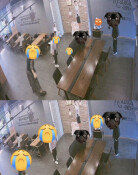New Center of Arts and Culture?
Twelve million people visit Broadway in New York every year, among whom foreigners account for 21 percent. Around 42 percent of the American visitors are from outside New York, so Broadway attracts 7.56 million people not from the Big Apple. These visitors spend a huge sum of money in the city. Broadway generates almost 900 million dollars per year in ticket sales, creates 44,000 jobs, and has an economic generating effect of 5.1 billion dollars per year for the city.
The greatest contributor to the citys economy is, of course, business, but culture also plays a significant part. London is another global hub of art and performances along with New York, attracting 14 million visitors a year. The performance industry plays a critical role in supporting the London economy amid the global economic crisis. In Korea, municipal and provincial governments are beginning to recognize the economic effect of culture. Arts Council Korea, an organization under the Culture, Sports, and Tourism Ministry, has accepted an offer from the Seoul ward of Guro-gu to move the councils office from Daehangno to Guro 5-dong next week. Guro-gu will build a new building near Shindorim subway station to give it to the council.
The council distributes 80 billion won (70 million U.S. dollars) in government grants to writers and artists. When it moves its office to a certain region, that area will draw many artists. Over the long term, art groups can settle down in Guro-gu. A musical theater with 1,400 seats will open this year as well as a performance art museum. Guro-gu wants to turn the ward into a street of culture and art like Daehakro.
Guro-gu is traditionally known as a factory district. It was the setting of the novel, Guro Arirang by Yi Mun-yol, describing the lives of women factory workers. The term dakjangchon, or a chicken cage village referring to workers living in a cramped room, was also coined there. Guro-gu has been thought of anything but a cultural district, so the fresh change from a factory-filled Guro-gu to cultural Guro-gu is welcome news for many people.
Chief Editorial Writer Hong Chan-sik (chansik@donga.com)







